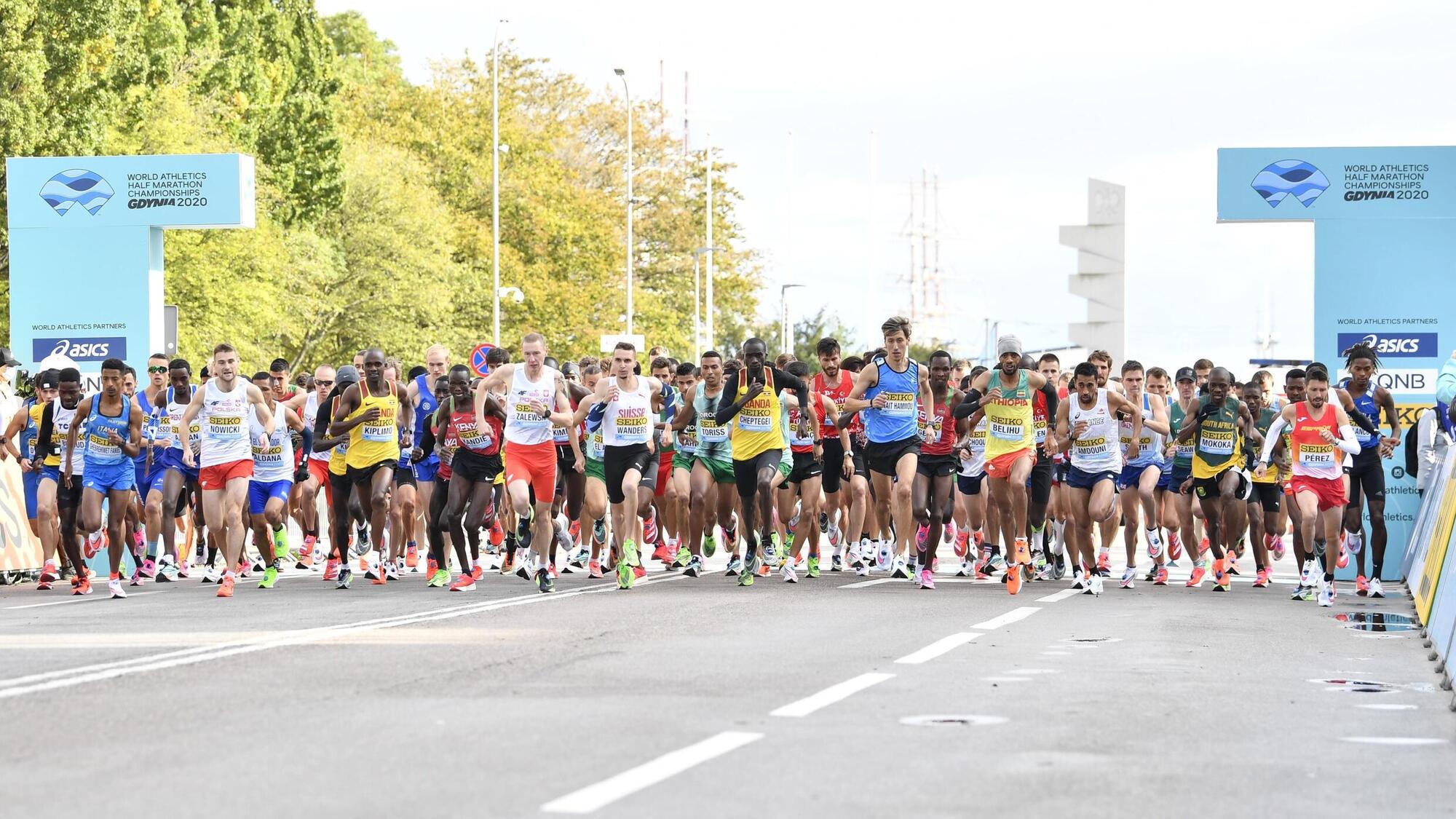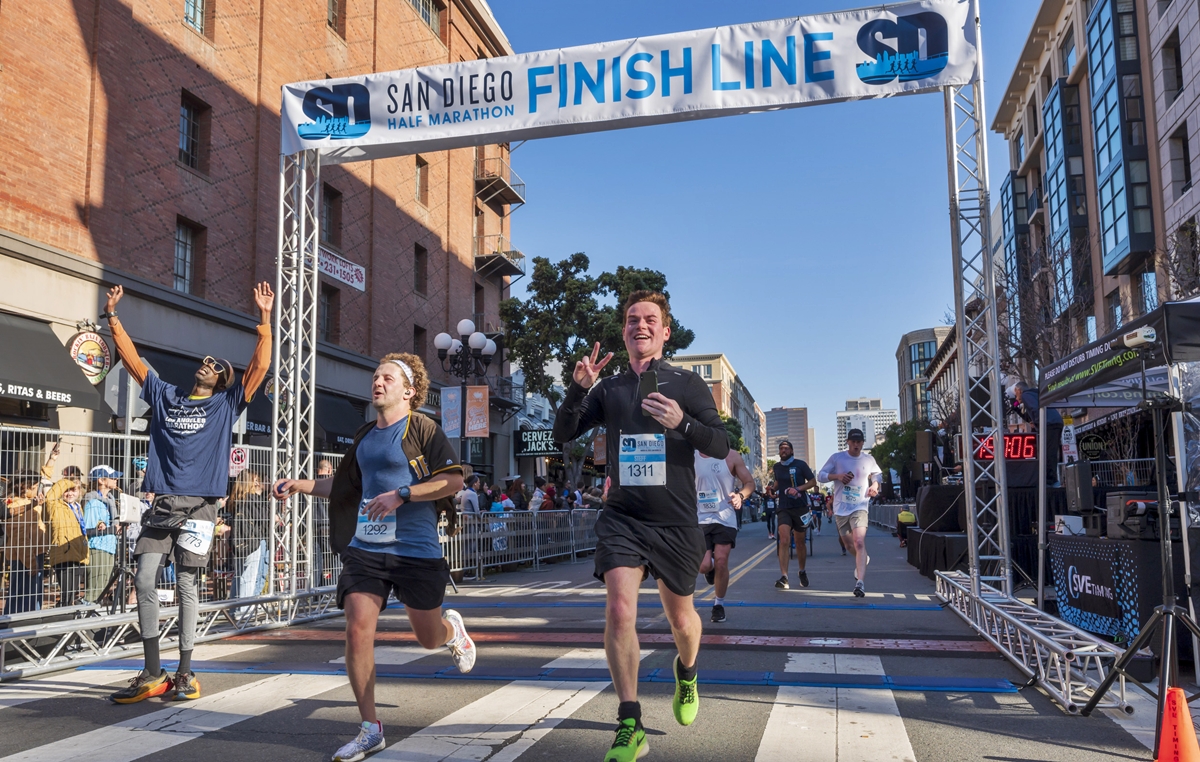

Featured
How Many Miles Is A Half Marathon?
Modified: January 22, 2024
Looking to find out how many miles make up a half marathon? Our featured guide has all the information you need to know!
Introduction
So you’ve heard about half marathons and you’re curious about how long they actually are. Maybe you’re contemplating signing up for one or perhaps you’re just looking to expand your knowledge about running. Whatever the reason, you’ve come to the right place.
A half marathon is a popular distance for runners, often seen as a stepping stone in their running journey. It’s the perfect middle ground between a 10K and a full marathon, offering a challenge that pushes your limits without the immense commitment of training for a full 26.2 miles. But how many miles exactly does a half marathon entail?
In this article, we’ll dive into the details of a half marathon to help demystify the distance. We’ll explore how it’s measured, factors that can affect the distance, common routes you might encounter, and even touch on training tips for tackling this endurance feat.
Whether you’re a seasoned runner aiming to improve your PR or a novice lacing up your running shoes for the first time, understanding the distance of a half marathon is key to setting goals and tracking progress. So let’s lace up and hit the road!
Understanding Half Marathons
Before we delve into the specifics of how long a half marathon is, let’s take a moment to understand what exactly a half marathon entails. A half marathon is a long-distance race that covers a distance of 13.1 miles or 21.1 kilometers. It is precisely half the length of a full marathon, hence the name “half marathon.”
Half marathons have gained immense popularity in recent years due to their challenging yet achievable nature. They attract a wide range of participants, including seasoned runners looking to push their limits and beginners seeking a challenging yet doable goal. Whether you’re aiming for a personal best time or simply for the satisfaction of crossing the finish line, a half marathon can be an exciting and rewarding experience.
One of the advantages of participating in a half marathon is that it requires less time commitment in terms of training compared to a full marathon. While training for a half marathon still involves dedication and consistency, the shorter distance allows runners to balance their training with other obligations. This makes it an attractive option for those who want to test their endurance but may not have the time or desire to commit to the intense training required for a full marathon.
Another benefit of half marathons is the variety of races available. They take place not only in major cities but also in smaller towns and scenic locations, offering participants a chance to explore new places and experience different race environments. From urban routes that take you through iconic landmarks to coastal paths that offer breathtaking views, each half marathon has its own unique charm.
Half marathons also foster a sense of community and camaraderie among participants. The collective energy and support of fellow runners can provide a tremendous boost of motivation and encouragement throughout the race. Crossing the finish line, regardless of your time, is an accomplishment in itself and often leads to a sense of pride and joy.
Now that we have a better understanding of what a half marathon entails, let’s explore how the distance is measured and factors that can affect the length of a half marathon.
The Measurement of a Half Marathon
The measurement of a half marathon follows a standardized process to ensure accuracy and consistency across races. The distance is officially recognized as 13.1 miles or 21.1 kilometers. But how do race organizers ensure that the course precisely meets this distance?
Professional race courses are typically measured using a method called “Jones Counter,” which involves a calibrated bicycle wheel that rolls along the course, carefully tracking the distance. This measurement ensures that the course accurately reflects the intended half marathon distance.
In addition to the Jones Counter method, modern GPS technology is also used to measure courses. GPS devices, such as those found in smartphones or dedicated running watches, can provide a rough estimate of distance based on the satellite signals they receive. However, it’s important to note that GPS measurements may not always be perfectly accurate due to factors such as signal interference or slight errors in the device’s calculations.
To ensure consistency, race organizers often have their courses officially certified by an athletics governing body, such as USA Track & Field (USATF) in the United States or the Association of International Marathons and Distance Races (AIMS) internationally. These certifications involve verifying the course’s measurement and confirming that it meets the required distance standards.
It’s worth noting that while the official measurement should be accurate, slight discrepancies may still occur due to factors such as course design, lane placement, and turns. Organizers typically take these factors into account when planning the course, aiming to create a challenging yet fair route for participants.
Now that we understand how half marathons are measured, let’s explore some factors that can influence the actual distance experienced by runners.
Factors That Affect the Distance
While the standard measurement for a half marathon is 13.1 miles or 21.1 kilometers, it’s important to understand that variations in the actual distance may arise due to several factors. These factors can affect the overall length experienced by runners participating in different half marathon events.
One factor that can impact the distance is the course layout. The way the course is designed, including any twists, turns, or sharp corners, can affect the measurement. A course with many tight turns may end up being slightly longer than a straight, flat course due to the wider arcs needed to navigate the corners.
Another element that can affect the distance is the placement of the race route on the road. Half marathons are often held on public roads, and the available lanes for runners can vary. If the race course follows the inside of a curve or if there are lane changes during the race, it could result in a longer or shorter distance for participants.
Weather conditions can also play a role in the distance experienced by runners. Wind resistance and running on uneven surfaces, such as wet or muddy terrain, can affect running efficiency. This may result in runners taking slightly longer strides or altering their course, ultimately impacting the overall distance covered during the race.
Lastly, it’s important to consider the accuracy of individual GPS devices used by runners. While GPS technology can provide a general estimate of distance, it may not always be 100% precise. Small measurement errors or signal interference can lead to subtle variations in distance readings, which may affect the perceived length of the half marathon.
Despite these factors, it’s important to remember that race organizers strive to provide an accurate and fair distance for participants. Certification processes and adherence to measurement standards help ensure consistency in half marathon races. Regardless of slight variations in distance, the challenge and achievement of completing a half marathon remain the same.
Now that we have explored the factors that can influence the distance experienced in a half marathon, let’s take a look at some common half marathon routes that runners might encounter.
Common Half Marathon Routes
Half marathons are held in various locations around the world, and each race offers its own unique course that showcases the local landmarks and terrain. Here are some common types of half marathon routes that runners might encounter:
- Urban Course: Urban half marathons take place in bustling city streets, offering runners the opportunity to experience the vibrant atmosphere and iconic landmarks. Participants may run past skyscrapers, famous bridges, and historic sites, immersing themselves in the energy of the city while challenging their endurance.
- Scenic Coastal Path: Many half marathons are set along scenic coastal paths, providing breathtaking views of the ocean and coastline. Runners can enjoy the refreshing sea breeze and picturesque vistas as they navigate the course. The serenity of the waves crashing against the shore can offer a soothing backdrop to the physical exertion of the race.
- Trail Run: For those seeking a more adventurous half marathon experience, trail runs are a popular choice. These races take participants off-road and onto nature trails, through forests, mountains, or parklands. Trail runs offer a unique challenge as runners navigate uneven terrain and conquer elevation changes, all while surrounded by the beauty of nature.
- Historical Route: Some half marathons are designed to showcase the historical aspects of a particular region or city. These races often pass by significant landmarks, monuments, or historic sites, allowing participants to immerse themselves in the rich heritage of the area while pursuing their running goals.
- Charity Runs: Many half marathons are organized as charity events, raising funds and awareness for a specific cause or organization. These races may weave through local neighborhoods or community areas, encouraging local support and involvement. The sense of purpose and the opportunity to make a difference can add an extra layer of motivation and fulfillment for participants.
These common half marathon routes offer diversity in terms of scenery, terrain, and the overall experience. Whether you prefer the vibrant cityscape, the tranquility of the coast, the challenge of trail running, the immersion in history, or the opportunity to contribute to a greater cause, there’s a half marathon out there to suit your preferences.
Now that we have explored common half marathon routes, let’s dive into the training aspect and discuss some tips for preparing for a half marathon.
Training for a Half Marathon
Training for a half marathon requires a structured approach to help build endurance, improve speed, and reduce the risk of injury. Whether you’re a beginner or a seasoned runner, here are some key tips to consider when preparing for a half marathon:
- Establish a Training Plan: It’s important to have a well-designed training plan that gradually increases mileage and includes rest days to allow for recovery. A typical half marathon training plan spans several weeks and involves a combination of short runs, long runs, tempo runs, and cross-training exercises.
- Build Mileage Gradually: Gradually increase your mileage each week to avoid overexertion and potential injuries. Aim for a mix of shorter runs to build speed and longer runs to build endurance. Incorporate rest days to give your body time to recover and adapt to the increased physical demands.
- Include Strength Training: In addition to running, incorporate strength training exercises into your routine. Strengthening key muscles can improve running efficiency and help prevent common injuries. Focus on exercises that target the legs, core, and upper body to build overall strength and stability.
- Practice Interval Training: Interval training involves alternating between high-intensity bursts of speed and periods of active recovery. This type of training can improve your cardiovascular fitness and enhance your running performance. Include interval workouts in your training plan to challenge your body and increase your speed.
- Maintain a Balanced Diet: Fuel your body with a well-balanced diet that includes carbohydrates for energy, protein for muscle repair, and healthy fats for overall health. Stay hydrated throughout your training and on race day to optimize performance and recovery.
- Listen to Your Body: Pay attention to any signs of fatigue, discomfort, or pain during your training. Soreness is normal, but pushing through severe pain can lead to injury. Rest when needed, seek professional advice if necessary, and modify your training plan accordingly.
- Prepare Mentally: Half marathons can be physically and mentally demanding. Develop mental strategies to stay motivated and focused during your training and on race day. Visualization techniques, positive self-talk, and setting realistic goals can help you overcome challenges and stay mentally strong throughout the process.
Remember that everyone’s training journey is unique, and it’s important to adjust your plan according to your own fitness level, schedule, and goals. Don’t forget to celebrate small achievements along the way and enjoy the process of training and preparing for your half marathon.
Now that we have covered the essentials of training, let’s wrap up this article with a recap of what we have discussed.
Conclusion
In this comprehensive article, we have explored the fascinating world of half marathons – from understanding the distance and measurement to the factors that can affect it. We have discussed the diverse range of half marathon routes, each offering its own unique experience for runners. Additionally, we have delved into the essential aspects of training for a half marathon, providing tips and guidance to help you prepare physically and mentally for the challenge.
Half marathons have become increasingly popular due to their manageable distance and widespread accessibility. They offer participants a chance to push their limits, achieve personal goals, and experience the sense of accomplishment that comes with crossing the finish line.
Whether you’re a seasoned runner aiming for a new personal record or a beginner taking your first steps into the world of distance running, a half marathon is a fantastic challenge to pursue. It provides an opportunity to test your endurance, explore new locations, connect with fellow runners, and ultimately, discover the incredible potential of your own capabilities.
As you embark on your half marathon journey, remember to listen to your body, stay consistent with your training, and embrace the entire process. Be patient and celebrate every milestone along the way, from completing your first long run to achieving new PRs in your speed workouts. With dedication, perseverance, and a positive mindset, you will be well on your way to conquering the half marathon distance.
So, whether you’re lacing up your running shoes for the first time or are a seasoned half marathoner seeking a new challenge, the journey to a half marathon is one that will undoubtedly test your physical and mental limits. Embrace the training, relish the race day experience, and enjoy the incredible sense of accomplishment that comes with completing 13.1 miles.
Now, it’s time to take that first step, set your goals, and start your half marathon adventure!









